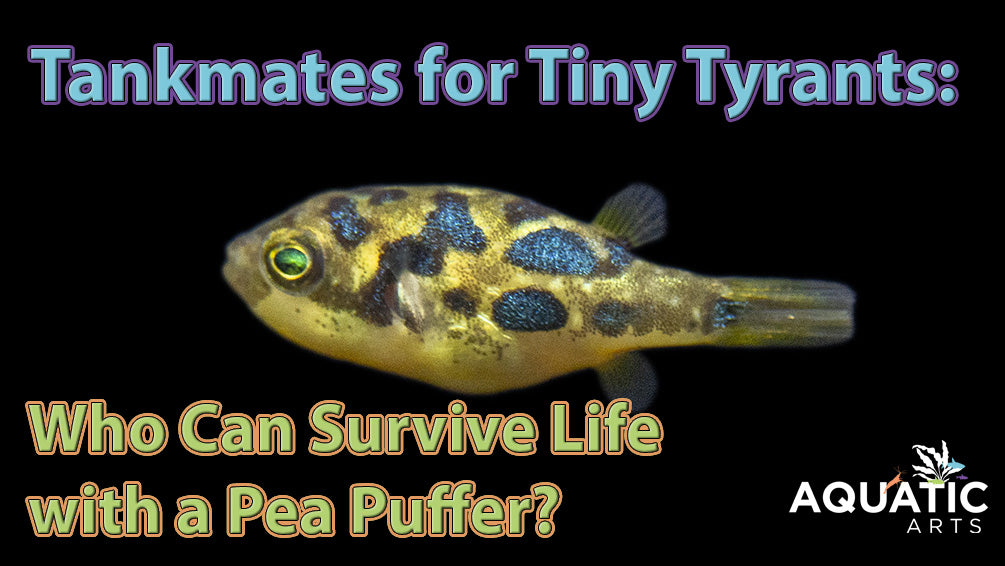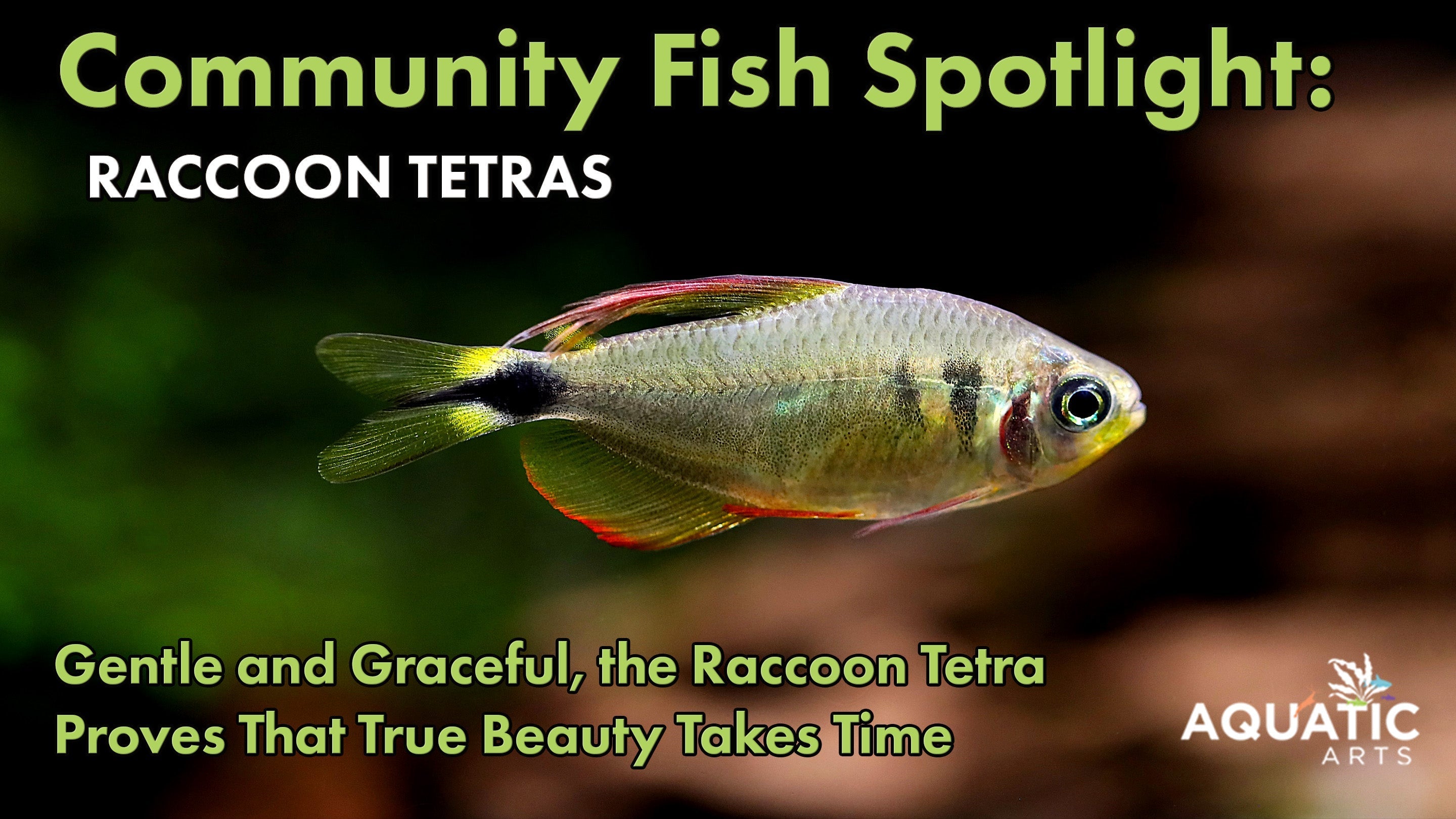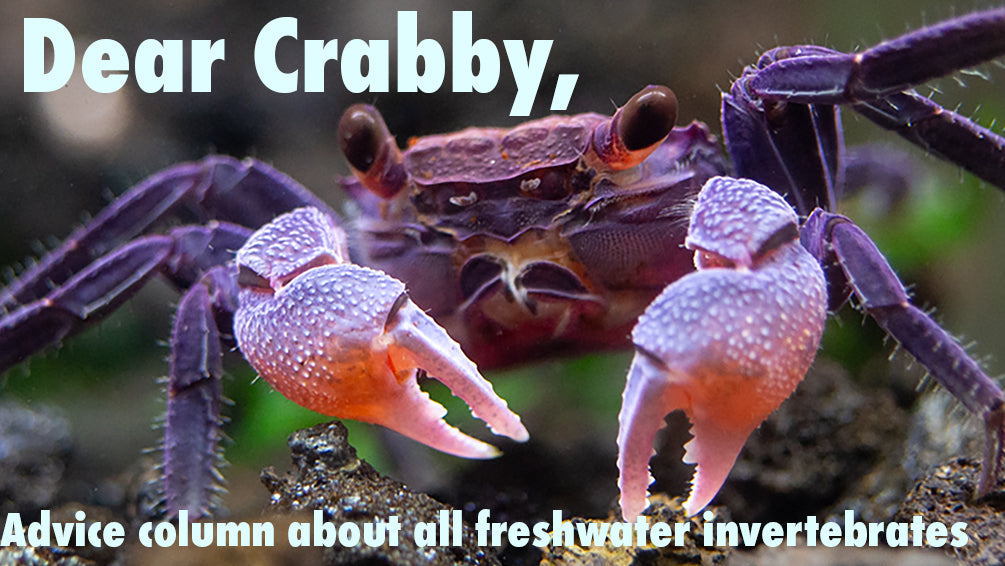Tankmates for Tiny Tyrants: Who Can Survive Life with a Pea Puffer?

Finding the Perfect Tankmates for Your Pea Puffer: Who Can Coexist with These Tiny Terrible Tyrants?
Introduction
So, you’ve fallen under the spell of the charming yet feisty Pea Puffer (Carinotetraodon travancoricus). They may be small, but don’t let that fool you—these pint-sized puffers pack a punch when it comes to personality (and nipping!). Finding the right tankmates for these little fireballs can be tricky, but not impossible. Let’s dive into the world of Pea Puffer tankmate compatibility and find out who can hang with these finned feisty pants without turning into lunch.
Why Pea Puffers Think They’re the Boss
Despite their adorable size (only about 1-1.5 inches long!), Pea Puffers come with an attitude the size of a Great White. These mini bullies are territorial, fast, and have no problem reminding other fish who’s in charge of the tank. But with the right strategy—and a little luck—you can build a community where everyone coexists peacefully (most of the time).
Fast Movers: The Great Escape Artists
Pea Puffers might be bullies, but they’re not speed demons. One of the best strategies to keep their nippy tendencies in check is to choose tankmates that are fast and furious. These fish know how to keep their distance and zoom away before a Puffer has the chance to say “Boo!”
- Otocinclus Catfish: These quick little algae-suckers zip around the tank, staying out of sight while keeping your tank spotless. They’re basically the ninjas of the fish world. Even the bossy Pea Puffers will have a hard time catching up to them.

Otocinclus Catfish: Known for their algae-eating prowess, these small and peaceful fish are a must-have for maintaining a clean, well-balanced aquarium. Ideal for planted tanks, they thrive in groups and help keep surfaces free of algae.
- Danios and Rasboras: If you want a colorful, lively tankmate, look no further. These fish are lightning-fast and can dodge any grumpy Puffer coming their way. Just be sure your tank has enough space for everyone to do their thing without bumping into each other.

Harlequin Rasboras: A vibrant and peaceful schooling fish, perfect for planted community tanks. Their striking copper and black colors create a beautiful contrast against lush greenery, making them a popular choice for aquascaping enthusiasts.
The Shrimp Dilemma: Proceed with Caution
While it may be tempting to throw in a few shrimp to keep things interesting, this can be a risky move. Pea Puffers are notorious for viewing shrimp as a tasty snack, not tankmates. If you’re determined to try, do so with extreme caution and always have a backup plan (like another tank) ready.
- Amano Shrimp: In rare cases, some aquarists have successfully kept Amano shrimp with Pea Puffers, but this is far from guaranteed. Amano shrimp are larger and faster than other shrimp species, but even they can end up as a puffer's next meal. If you try this, make sure your tank has lots of plants and hiding spots.
- Proceed at Your Own Risk: Pea Puffers are opportunistic hunters, and even fast shrimp can become food if they let their guard down. Most aquarists agree that shrimp and puffers are better kept apart to avoid unnecessary casualties.
Snails: The Crunchy Snack Dilemma
Pea Puffers and snails… it’s complicated. Snails are like the potato chips of the Puffer world—once they start, they can’t stop! However, there is a silver lining: offering smaller snails like Ramshorn or Bladder snails not only provides entertainment but also helps keep your Puffer’s beak-like teeth trimmed (which is essential, by the way). But beware—don’t add your prized Nerite Snails unless you want them turned into escargot.
Tankmates to Avoid: The No-Go List
Let’s be honest: some fish just don’t stand a chance against Pea Puffers. Long-finned beauties like Bettas or slow-swimming Corydoras will likely end up as chew toys. And trust us, no fish likes being a chew toy.
- Long-Finned Fish: Bettas, Guppies, or any fish that looks like it’s wearing a fancy gown will quickly become the target of your Pea Puffer’s mischievous nipping.
- Slow Bottom Dwellers: Unfortunately, Corydoras and other slow bottom dwellers aren’t fast enough to escape the Puffer’s curious (and sometimes aggressive) advances. They’ll spend more time avoiding your Pea Puffer than enjoying their peaceful bottom-dwelling life.
Building a Pea Puffer Palace
If you’re keeping multiple Pea Puffers, or even just one alongside other species, tank setup is key to keeping the peace. Think of it like this: more plants, more peace. Dense planting creates plenty of visual barriers, so your Puffers don’t have to see each other all the time. Less eye contact equals less drama.
- Dense Planting: Load up your tank with live plants, rocks, and hiding spots. Java moss, Anubias, and driftwood work wonders to create hiding places and territory boundaries.
- Space is Your Friend: Bigger is always better when it comes to tanks for Pea Puffers. A 10-gallon tank is the bare minimum for a few of these mini tyrants, but the more space you give them, the less likely they are to fight.
Conclusion
So, is your Pea Puffer doomed to a life of solitude? Not necessarily! With a little creativity and careful selection, you can find fast, resilient tankmates that won’t end up on the Puffer’s menu. Whether it’s speedy fish or a small army of snack-sized snails, there’s hope for harmony in your Puffer paradise. Just remember to monitor the tank closely and be ready to make adjustments if things get too heated—after all, Pea Puffers are known for being unpredictable. Happy fishkeeping!
Pea Puffer Q&A: Everything You Need to Know
Q: Can Pea Puffers Live with Other Fish?
A: Yes, Pea Puffers can live with certain tankmates, but their territorial and aggressive behavior means you need to choose carefully. Fast-moving species like Otocinclus catfish and certain Danios are good options because they can outswim the Puffer’s nippy tendencies.
Q: Can Pea Puffers Live with Snails?
A: While snails can coexist with Pea Puffers, they are almost always seen as potential snacks. Smaller snails, like Ramshorn or Bladder snails, will likely become part of the Puffer’s diet. Even larger snails, like Nerites, may not be safe, so always view snails as food, not just tankmates.
Q: Can Pea Puffers Live with Shrimp?
A: While some aquarists have reported success with Amano shrimp, it’s risky. Pea Puffers often see shrimp as food, so extreme caution is advised. Shrimp tankmates are generally not recommended unless you have plenty of hiding spots and monitor closely.
Q: What Do Pea Puffers Eat?
A: Pea Puffers are carnivores with a preference for live or frozen food such as bloodworms, brine shrimp, and especially snails. Offering small snails helps keep their beak-like teeth trimmed, but they will not hesitate to hunt and eat them. Avoid feeding flakes or pellets, as they may not take to these.
Q: How Many Pea Puffers Should I Keep Together?
A: You can keep multiple Pea Puffers together, but it’s best to have a larger tank (10 gallons or more) and plenty of plants and hiding spots to prevent territorial aggression. A ratio of one Puffer per 5 gallons of water is a good rule of thumb.
Q: Do Pea Puffers Need a Heavily Planted Tank?
A: Yes, Pea Puffers thrive in heavily planted tanks. Dense vegetation, rocks, and driftwood help break up their line of sight and reduce aggression by providing hiding spots and territories.
Q: Are Pea Puffers Hard to Keep?
A: Pea Puffers require more care than some other fish due to their dietary needs, territorial behavior, and the importance of keeping their teeth trimmed. However, with the right setup and attention to detail, they can thrive and provide plenty of entertainment.
Q: How Big Do Pea Puffers Get?
A: Pea Puffers stay small, typically reaching about 1 to 1.5 inches in size, making them ideal for nano aquariums with appropriate tank conditions.
Q: Do Pea Puffers Nip Fins?
A: Yes, Pea Puffers are notorious for nipping at the fins of slow-moving or long-finned fish. This is why tankmate selection is so important—opt for fast, agile fish that can avoid these feisty little nippers.
Q: How Often Should I Feed My Pea Puffer?
A: Pea Puffers should be fed small amounts of live or frozen food daily. It’s essential to vary their diet to ensure they get the nutrition they need while also offering snails or other hard-shelled food regularly to maintain their teeth.




